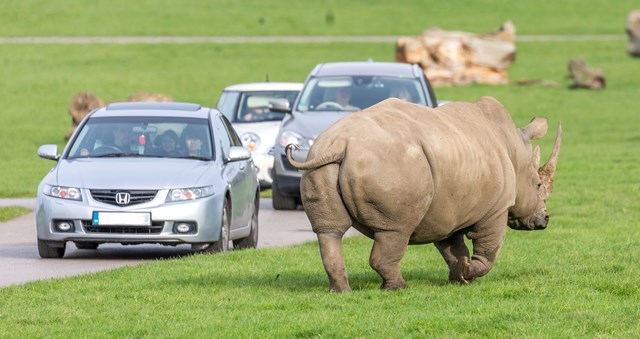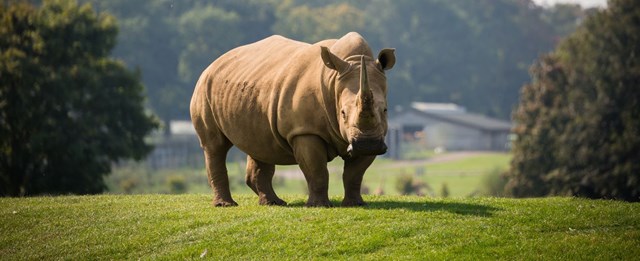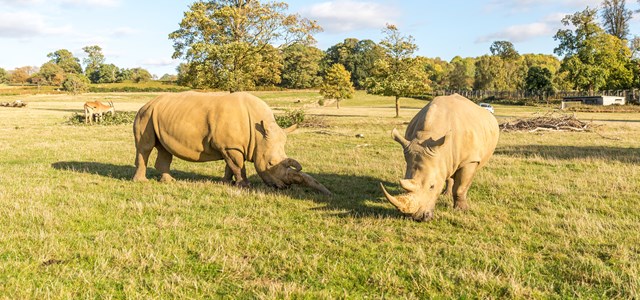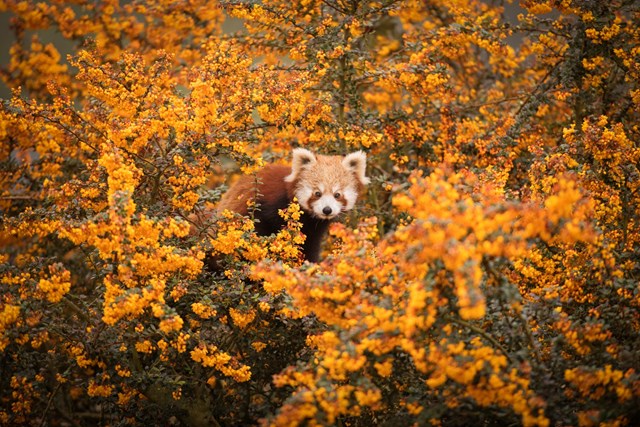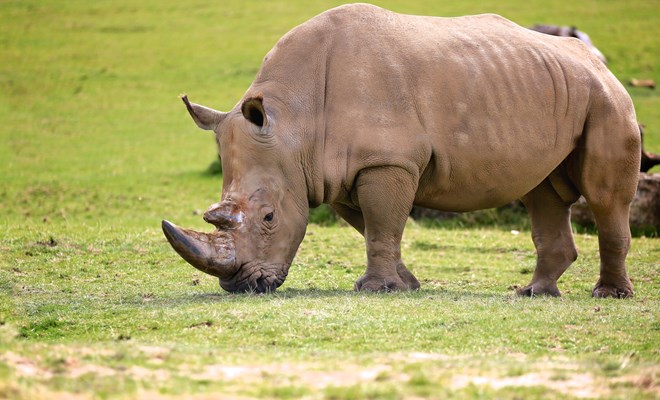
Overview
Woburn Safari Park is home to a number of Southern White Rhino which can be seen in the Savannah section of the Road Safari. They are able to roam in their 42 acre exhibit with a number of other African species including eland, Grezy's zebra and common ostrich.
Male Kei can be seen in the top paddock as you drive past the rhino house, in what is known as the 'bull pen'.
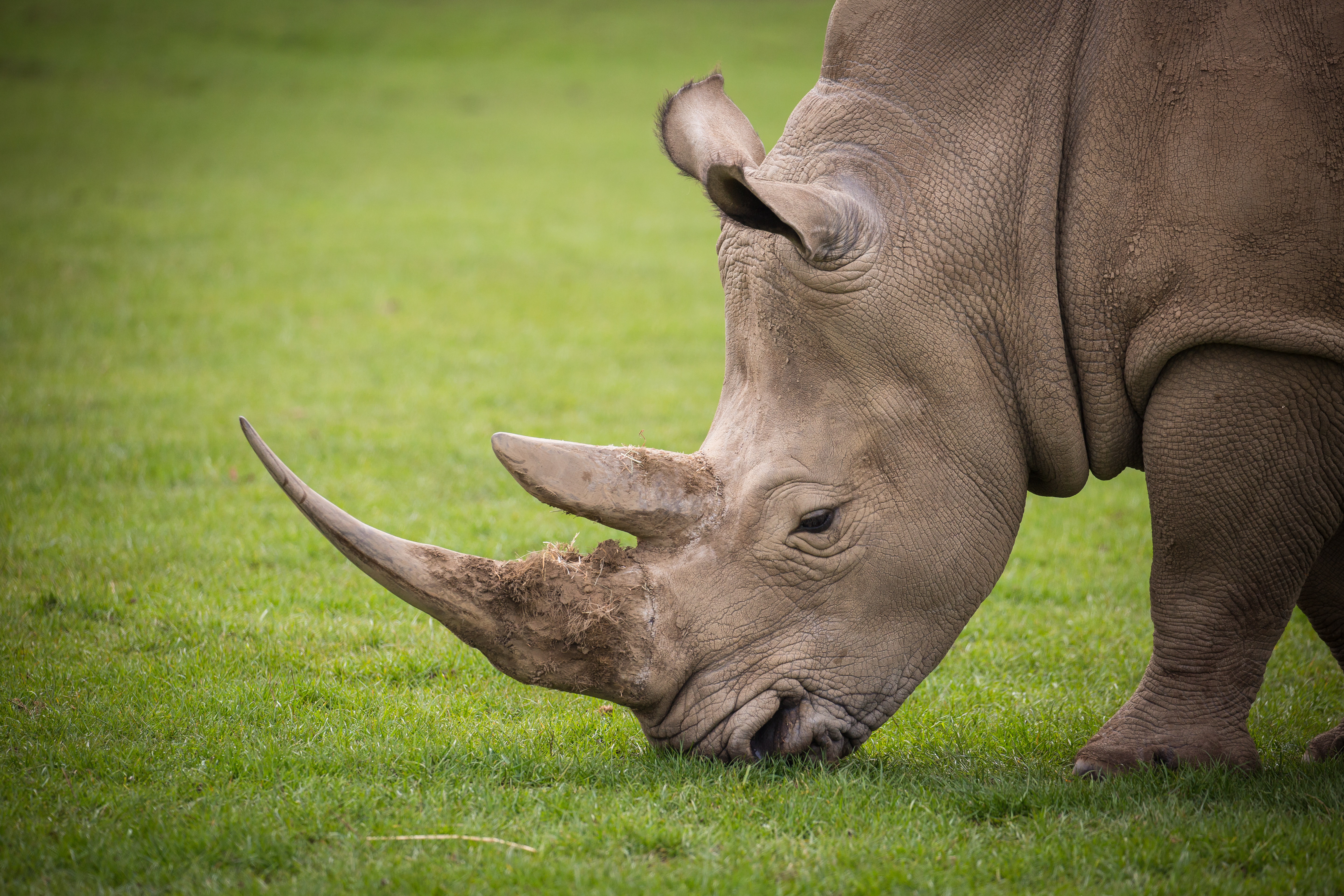
All about us
| Distribution: | South Africa |
|---|---|
| Habitat: | Open grassland and savannah woodlands |
| Height: | 5 - 6 ft at the shoulder |
| Weight: | Between 1,800 and 2,700 kg |
| Gestation Period: | 16 Months |
| Lifespan: | 40 to 50 Years |
| Threats: | Illegal rhino horn trade, habitat loss and political conflict |
Scientific name: Ceratotherium simum
Southern white rhino are often found in groups of up to 14 individuals which consist of cows and their offspring and sub-adult bulls. Dominant bulls are often solitary and will occupy smaller territories and mark their boundary by spreading dung, defecating on dung piles known as middens and spraying urine. Within the territory of the mature bull there is often between one to three resident satellite bulls which the dominant bull will ignore as long as they are submissive.

Southern white rhino facts
The southern white rhino is the largest and considered to be the most placid of all the rhinoceros family. They have a very large head that is supported by a huge muscle mass that forms a hump over their shoulders and they will only look up when alarmed. They have very poor eyesight, they can see a moving object at a distance of around 100 metres but only approximately 50 metres for a stationary object. However, they compensate for this by having an excellent sense of smell and good hearing. The ability to move its cone shaped ears independently along with olfactory senses allows the rhino to be aware of the presence of predators and other rhinos effectively. They are able to run up to speeds of 45kph for short periods of time and despite their appearance, are very agile animals.
The skin of the rhino can be up to an inch thick in places providing a good defence against attacks from other rhinos or predators. In other areas the skin can be thin enough for a mosquito to draw blood. As the rhino live in a very hot environment it has to be able to keep itself cool. The rhino will do this by wallowing in pools of water or mud and coating themselves almost entirely if possible. This provides a protection layer and as the liquid evaporates it reduces the temperature of the skin.
The length of the front horn, otherwise known as the Anterior horn, of the Southern white rhino is between 37 to 40 inches and the back horn, otherwise known as the posterior horn, can reach up to 22 inches in length. Rhino will use their horns against other rhino for dominance and threat displays but also as weapons against predators. The horns grow from the skin and consist of compressed strands of keratin. They are not attached to the skull and if broken away, will subsequently grow back.
Southern white rhino are herbivores and will spend the majority of the morning, late afternoon and night time grazing. They have a wide flat mouth which is well adapted for their grazing lifestyle.
As a cow approaching oestrus walks through the territory of a dominant bull he will accompany her at a distance initially until she is in full oestrus and will allow him to come closer. He will then become vocal and proceed to rest his chin on her rump and will attempt to mount her. Eventually after a lot of determination from the bull the cow will stand with tail curled and allow copulation. Mating can last from anything up to 20 minutes to one hour. The male will attempt to keep receptive females from leaving his territory and will confront any invading bulls.
The gestation period of the rhino is 16 months and they will give birth to one calf at a time. A new-born rhino calf can weigh up to 65 kilos and is very quick to stand on its feet. A rhino mother may tend to her calf for up to four years unless she is due to calve again in which case she will push her offspring into independence before the birth of her next calf.
There are numerous threats that have contributed to the decline of the rhinos wild population, nearly all of which are caused by humans. Some young calves can fall prey to big cats, crocodiles and hyenas but the main factors affecting the rhinos wild population include the illegal rhino horn trade, habitat loss and political conflict. Poaching of rhino horn for the production of traditional Chinese medicine is the greatest threat facing rhino today. Rhino horn is widely used in chinese medicine as false claims have been made through the centuries that it can be used to treat ailments as diverse as treating snake bites, curing typhoid, headaches, feverish colds, carbuncles, arthritis, expel fear and anxiety, hallucinations and even cancer. Of course none of this is true, rhino horn serves no medicinal purpose whatsoever but it is a testimony to the power of tradition that millions of people believe that it does. The poaching of these majestic creatures has been responsible for the death of tens of thousands of rhinos around the world.
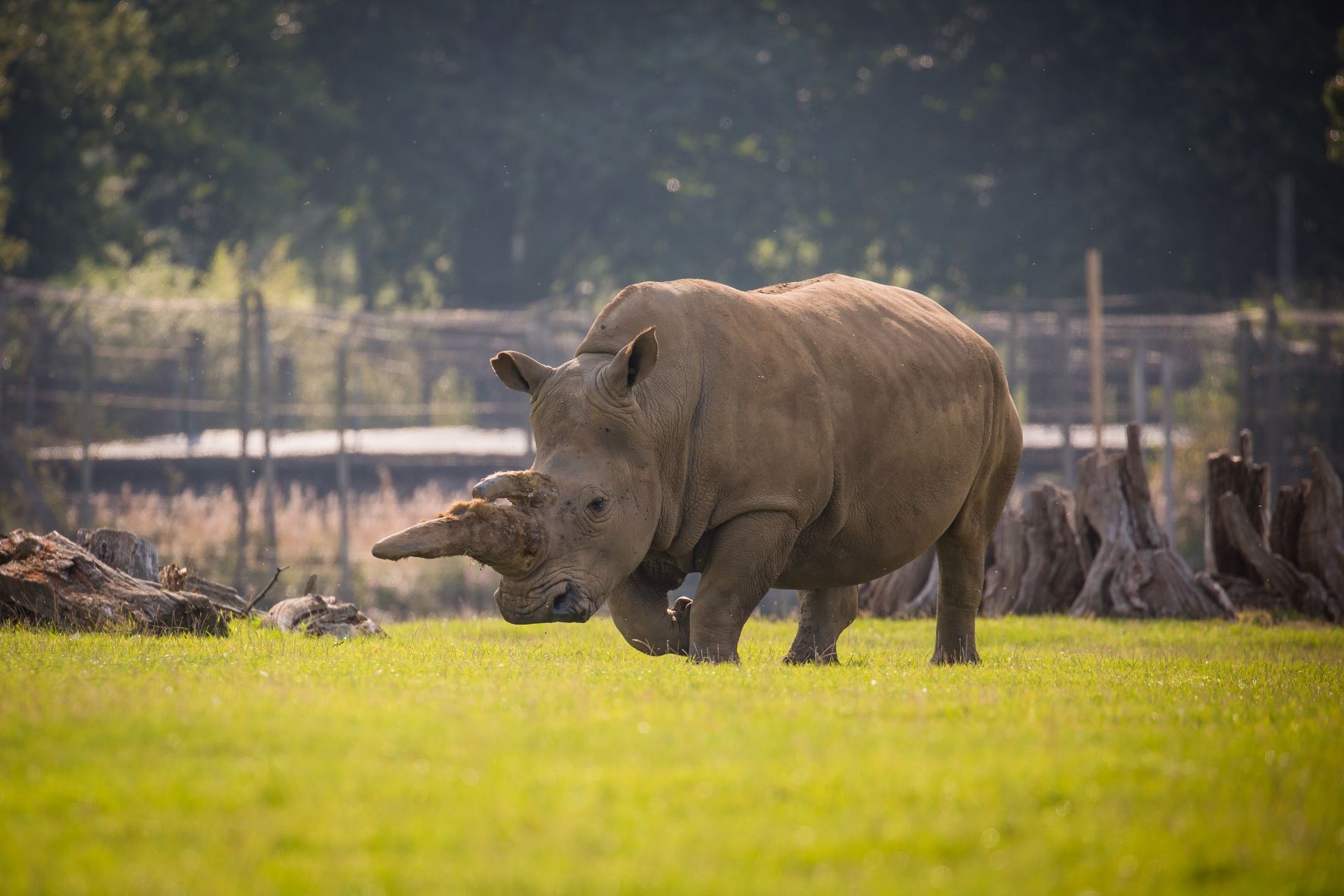
Meet Mirijam the Southern white rhino
Mirijam is a Southern White Rhino; she lives alongside two other rhinos in the Savannah Grasslands reserves.
